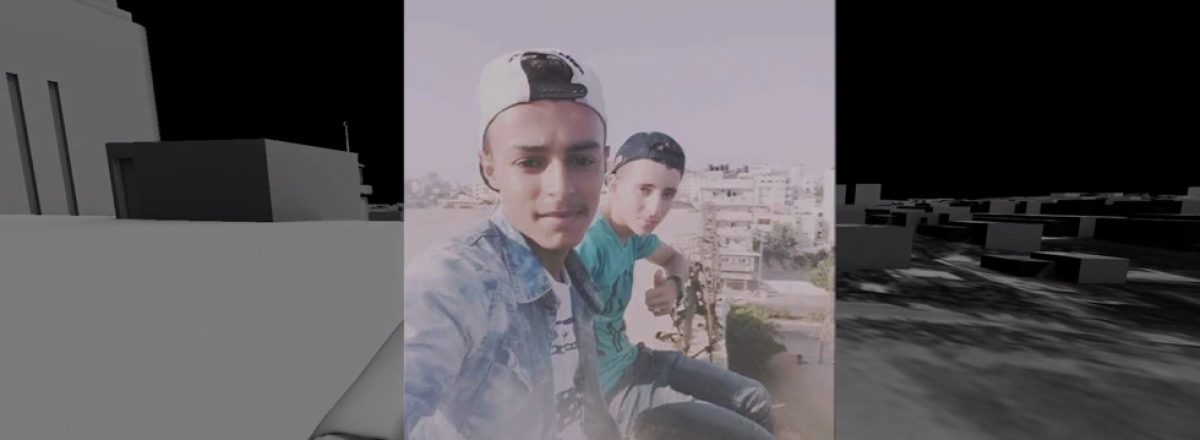‘Warning strike’ killed two Palestinian teenagers

The case
On 14 July 2018, around 6 P.M., the partially constructed al-Katibah Building in Gaza City was the target of an Israeli airstrike, consisting of four initial missiles, followed by four larger strikes. The first missile killed two Palestinian teenagers, Amir a-Nimrah and Luai Kahil, as they sat on the roof of the building. Twenty-three others were injured in the following strikes, which also damaged two neighboring buildings—a cultural center and a mosque.
The four initial missiles launched were part of what the Israeli military calls ‘roof knocking’, a policy by which ‘low-explosive munitions’ are used, supposedly to warn civilians of a larger impending strike and to allow time for them to evacuate the area. Israel claims that these warnings are legal and are meant to protect civilians. However, quite to the contrary, missiles launched as ‘roof knocking’ form part of an attack, for all intents and purposes. As such, they must follow the relevant rules under International Law. In this case a-Nimrah and Kahil were killed as a result of an attack that disregarded these rules completely.
The investigation
Following the attack, the Israeli military published footage of the strikes via its Twitter account, @idfspokesperson, supposedly showing four different strikes.
The attack was documented by a number of different sources. In addition to the Israeli military’s aerial footage, the attack was captured by nearby CCTV cameras. B’Tselem’s field researchers gathered further video material on the ground, as well as from social media and other open sources.
Forensic Architecture (FA) used this material to establish a definitive timeline of the sequence of strikes.
Conclusions
- Our investigation found that the sequence of videos published through the @idfspokesperson Twitter account edited out the first, fatal strike. The published footage did show four strikes in sequence, but that sequence did not reflect reality: the first strike featured in the published sequence was in fact the third warning strike, from a different angle.
- FA and B’Tselem also consulted multiple weapons experts, each of whom independently concluded that the fragmentation pattern caused by the fatal strike indicates the presence of shrapnel—indicating that the munitions used was specifically designed as an anti-personnel weapon. This contradicts the military’s claims.
- It is unknown if the two teenagers were visible to the military before the first strike. If they were, they should not have been targeted. But if not, it follows that the Israeli military cannot justifiably rely on its aerial surveillance technologies to avoid civilian casualties.
Quotes
Hagai El-Ad, Executive Director of B’Tselem, said: ‘Airstrikes in Gaza are marketed to the public by the Israeli military as surgical actions, designed to protect civilians, based on precision intelligence, accurate munitions, state-of-the-art surveillance, and close attention to international law.
‘In reality, that is often nothing more than propaganda. The truth, instead, is devastating civilian casualties, surveillance that is incapable of distinguishing combatants from teenagers, inept intelligence, and the reduction of legal principles that are intended to protect civilians into a perfunctory checklist, which is later used to whitewash human rights violations, and to establish impunity.’
Nicholas Masterton, a researcher with FA and coordinator for this project, said: ‘This investigation demonstrates how a deep reading of the imagery provided by the IDF, which was ostensibly intended to legitimise the “warning strikes” on the al-Katibah building, can be unravelled to reveal a different story.
‘The wealth of images and videos in this case allowed us to conduct a rigorous independent investigation, and to challenge the Israeli military’s claims. We could not only show that Kahil and a-Nimrah were killed by a deadly missile, but also expose the underhanded way in which the Israeli military presented details of such strikes to the public.’
Eyal Weizman, Forensic Architecture’s Director, said: ‘We decided to spend time investigating this case because warning strikes are an essential part of the Israeli military’s claims to high ethical standards. But such warnings are sometimes delivered with the same missiles that are used elsewhere to kill.
‘As a result, it’s no surprise that these warning strikes can kill the very civilians they are purportedly meant to warn, or that the message they are meant to deliver is often misunderstood.
‘Further, these so-called ‘warnings’ give the IDF a licence, as they perceive it, to subsequently commence heavy bombardment of buildings in dense urban areas. They can as such have the result of causing more civilian casualties, rather than preventing them.’